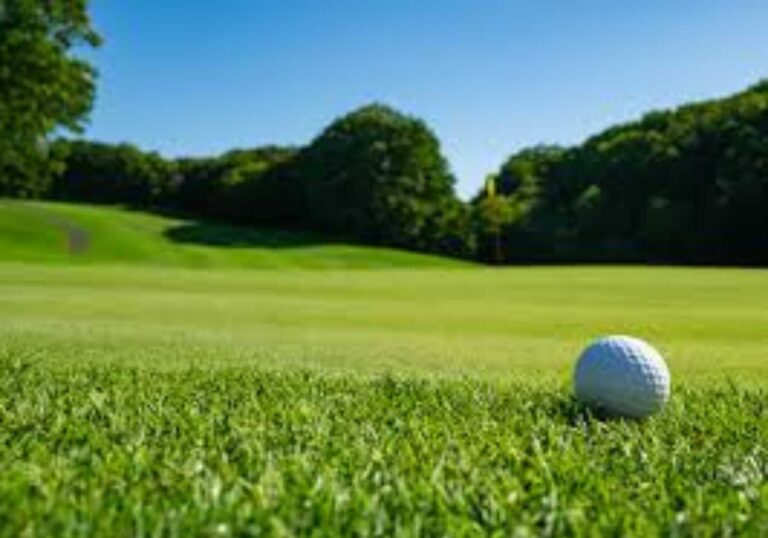Have you ever played a course and thought, “Why does the ball roll so differently here?” Or maybe you’ve noticed that some greens feel super slick, while others seem grabby or bumpy. A big part of that comes down to something we often overlook: the grass.
It’s easy to think of a golf course as just “green,” but the type of turf under your feet affects how the course plays, how the ball reacts, and even what clubs or shots might work best. Let’s walk through the most common types of golf grasses, where you’ll find them, and why they matter, but importantly without making it feel like a science class.
Why grass type matters in golf
Grass is more than a backdrop. It’s the actual surface your ball sits, rolls, spins, and bounces on. It impacts:
- How much spin your ball gets
- How smooth putts roll
- How firm or soft a course feels
- How rough grabs your club
- How tight fairways and lies play
Different grasses grow best in different climates, which is why courses in Florida might look and feel nothing like those in California or Scotland.
Now let’s break them down.
Warm-season grasses (common in the South and warmer regions)
These grasses thrive in hot, humid conditions and go dormant (turn brownish) in colder months. You’ll see them throughout the southeastern US, southwestern US, and other tropical or desert regions.
Bermuda
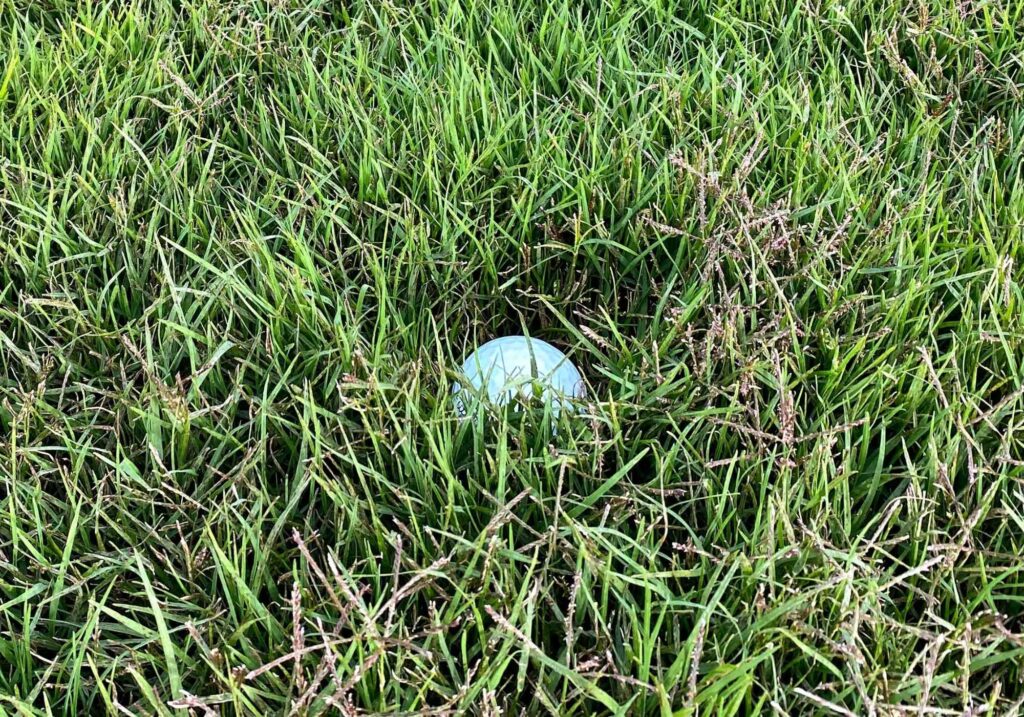
Where you’ll find it: Florida, Texas, Georgia, Arizona, Southern California
What it feels like: Firm, fast, and sometimes grainy
Why it matters: Bermuda is dense and grows in all directions, which creates grain. That grain can influence your putts and chips more than you’d expect. Putting into the grain feels slow. With the grain, it’s fast. On Bermuda greens, reading grain is as important as reading slope.
Bonus tip: In the rough, Bermuda can really grab your clubface. You might need to club up and accept less spin.
Zoysia
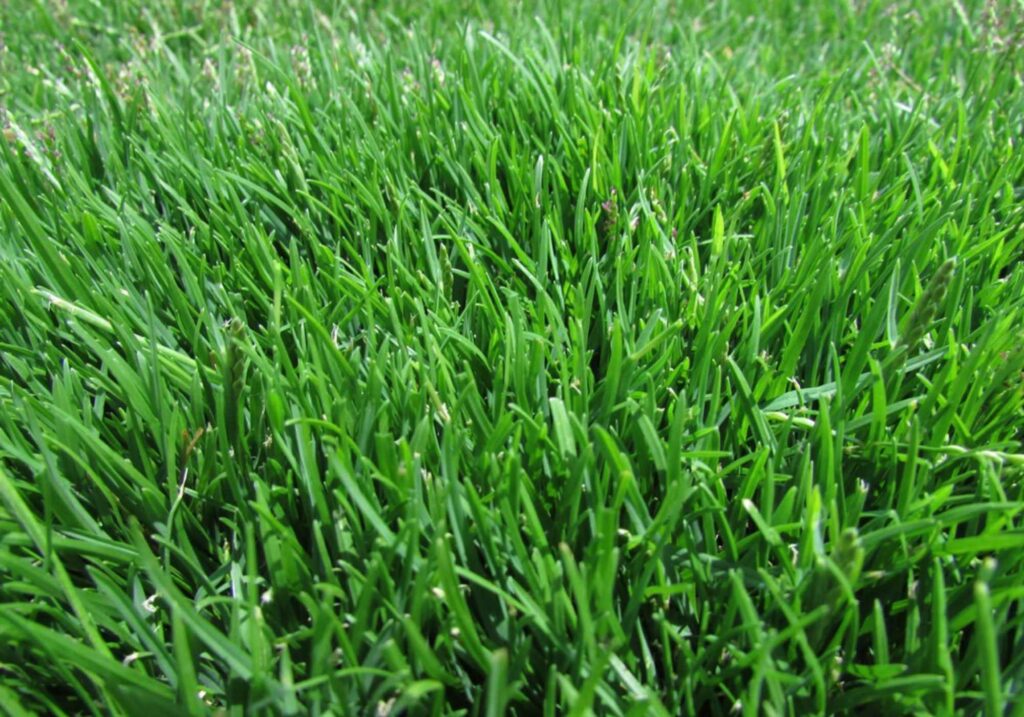
Where you’ll find it: Midwest, parts of the South, and into the transition zones
What it feels like: Cushiony, almost like the ball is sitting on a tee
Why it matters: Zoysia makes fairways feel like a dream. The ball tends to sit up perfectly, which makes iron shots easier. But in wet weather, it can get a little sticky and soft.
Bonus tip: You’ll get clean contact, but watch for flyers. Shots that come out hotter than expected.
Kikuyu
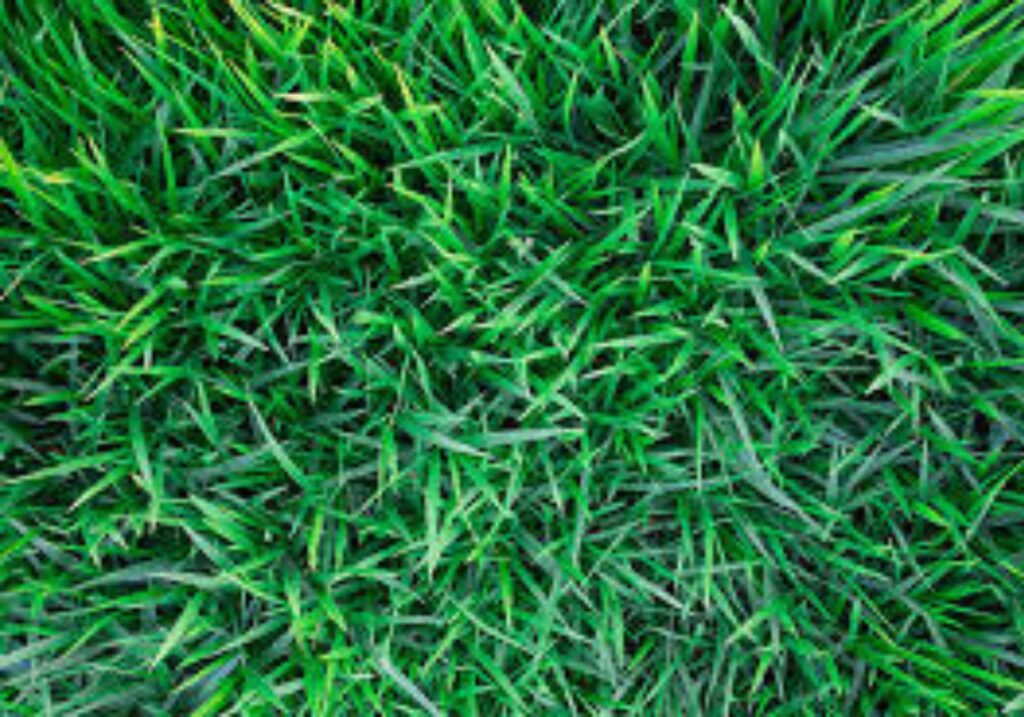
Where you’ll find it: Southern California, South Africa, Australia
What it feels like: Sticky and thick with a springy texture
Why it matters: Kikuyu creates a tough rough. It grabs your club hard and makes it tough to get clean contact unless the ball is sitting up. But around the greens, it can give you a soft landing and a lot of spin if you catch it right.
Bonus tip: In Kikuyu rough, you may need to chop down more aggressively to avoid the grass wrapping the hosel.
Cool-season grasses (common in the North and cooler regions)
These grasses grow well in moderate or cooler temps and tend to stay green longer into the year. You’ll find them all over the northern US, Canada, the UK, and parts of Europe.
Bentgrass
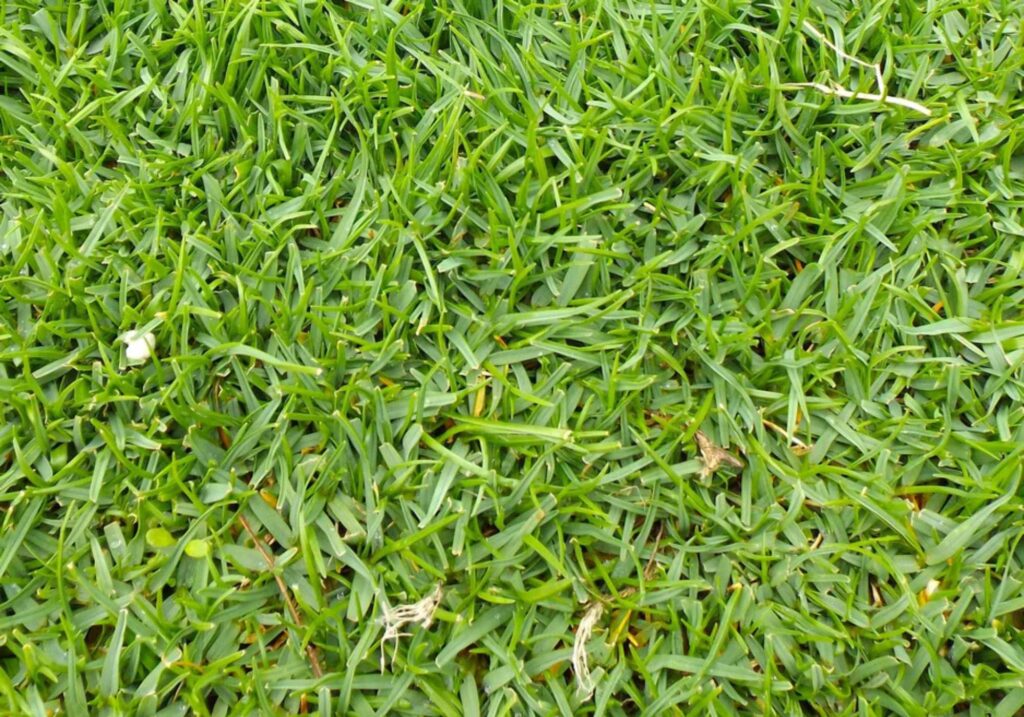
Where you’ll find it: Northeastern US, Midwest, Pacific Northwest, UK, Ireland
What it feels like: Smooth, fine-textured, and quick
Why it matters: Bentgrass greens are often considered the gold standard for smoothness. There’s minimal grain, so putts roll truer. Around the greens, it’s great for chipping and delicate shots.
Bonus tip: Bentgrass greens are usually fast. Focus on speed control and be careful not to overread break if you’re coming from a grain-heavy course.
Poa annua (or just “Poa”)
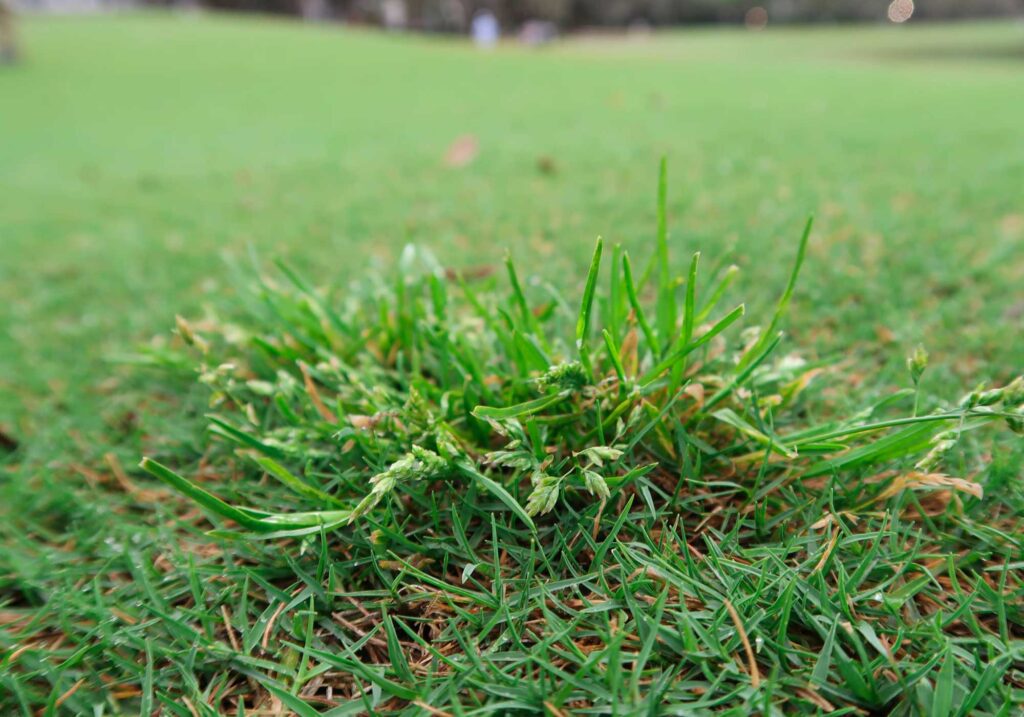
Where you’ll find it: California (especially coastal), Northeast, Pacific Northwest
What it feels like: A bit bumpy, especially late in the day
Why it matters: Poa can grow quickly and unevenly, especially in the afternoon. That means your putt might hit a few tiny bumps, which can cause wobble or inconsistency. It’s very common in older courses on the West Coast.
Bonus tip: Poa greens tend to get faster and bumpier as the day goes on. If you’re putting in the morning, enjoy the smooth roll.
Ryegrass
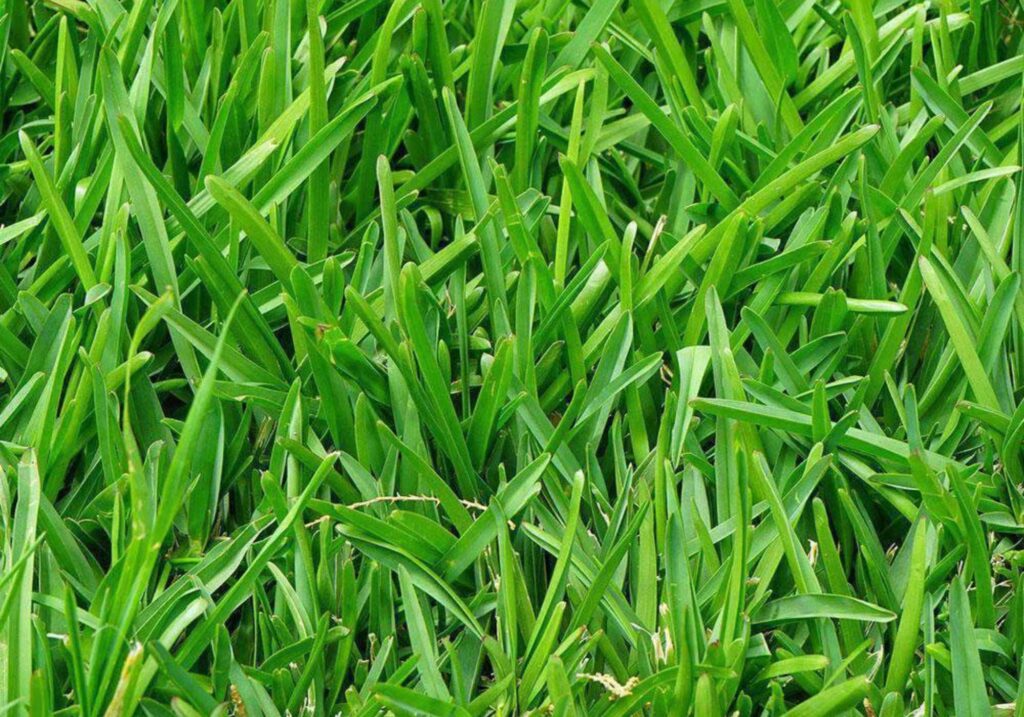
Where you’ll find it: Overseeded in the South during winter, also in northern roughs and fairways
What it feels like: Upright, durable, and medium-firm
Why it matters: Ryegrass is often used to overseed dormant warm-season grasses in cooler months. It provides good lies and decent control, though it doesn’t offer quite the same tight feel as Zoysia or Bentgrass.
Bonus tip: Ryegrass rough can be sneaky tough. The upright blades can twist the clubface at impact if you’re not careful.
What about fescue?
Fescue is a bit of a chameleon—it grows in cooler climates but also handles dry, tough conditions well.
Where you’ll find it: Links courses in the UK, high-end US courses that mimic that style (like Bandon Dunes or Sand Hills)
What it feels like: Wispy, natural, and firm
Why it matters: Fescue is used both on fairways and as tall, punishing rough. On fairways, it allows for firm turf and tons of rollout. In tall native areas, it’s pure trouble.
Bonus tip: On fescue fairways, expect the ball to bounce and roll. You may need to land approaches short and let them run up.
How to adjust your game based on grass
- On Bermuda greens, pay attention to grain direction. The darker the grass, the more likely you’re putting into the grain.
- On Poa greens, trust your line but don’t be surprised by a little bounce.
- On Zoysia fairways, be aggressive. The ball is sitting up waiting to be hit.
- In Kikuyu rough, accept that spin is hard to control. Play safer shots.
- On Bentgrass greens, enjoy the smooth ride and commit to your read.
Final thoughts
Understanding grass types isn’t just for superintendents and course architects. It’s a simple way to be more prepared every time you tee it up. Knowing what kind of turf you’re playing on helps you make smarter decisions, manage expectations, and adapt your short game.
You don’t need to memorize every variety. Just be curious. Next time you travel to a new course or visit a different region, take note of how the grass feels, how it affects your shots, and how your ball reacts.
Let’s hear from you
Have you ever played on a new type of grass and noticed a huge difference? Do you prefer smooth Bentgrass greens or the challenge of reading Bermuda? Share your experience in the comments.
